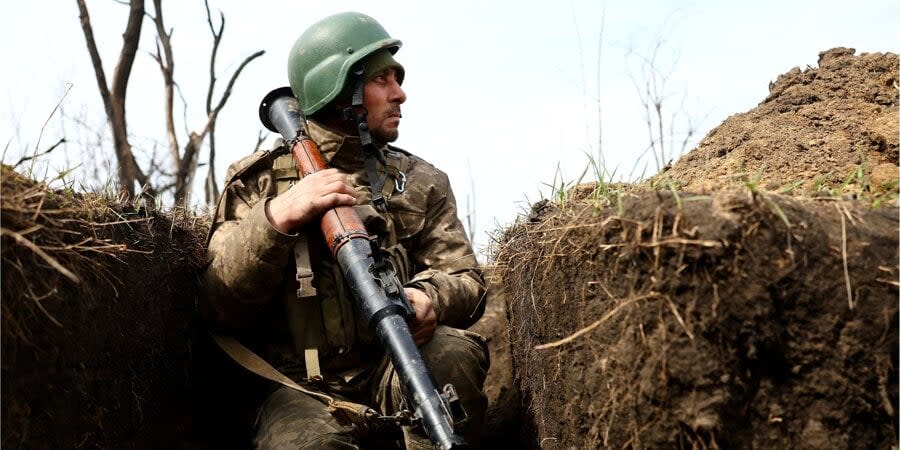Kyiv Security Forum experts analyze this week’s key frontline events

A serious shift in aerial warfare in the area has been noted due to the appearance of guided bombs on the battlefield, while deep inside Russia, the situation is increasingly out of the Kremlin's control.
Read also: The 12 steps to de-occupy Crimea – Ukraine’s Security Council
Kyiv Security Forum experts analyzed this week’s key frontline events.
Global debate continues as to whether Ukraine should continue to hold Bakhmut
Read also: Ukraine's Defense Ministry refutes Russian myths about Battle of Bakhmut
The Russian offensive near Bakhmut and Avdiyivka in Donbas has nearly ended. This is recognized both in Moscow and abroad. Ukraine is losing small sections of the front, but capturing others nearby, which is typical for this type of defense.
The key aspect of the Battle of Bakhmut is military-political (in other words, "strategic communications"). Both sides face an intense debate about correct tactics.
In Russia, talks are centered on whether their offensive will ultimately fail, despite the huge human losses, and whether they will withstand the Ukrainian counteroffensive. Feuding with the Russian Defense Ministry, Wagner PMC leader, Yevgeny Prigozhin, is publicly threatening Russians with the loss of Donbas and Crimea. The network of FSB agent Girkin-Strelkov is also stepping up its alarmist rhetoric. In spite of the censorship on Russian TV, these factors are discrediting Russia’s continued mobilization.
Read also: Bakhmut is protecting four near-front cities, says former Aidar commander
Ukraine has demonstrated qualitative changes in the defense of Donbas, primarily with the increased use of armored vehicles. There is still an ongoing debate about whether it is worth continuing to hold Bakhmut. Ukrainian President Volodymyr Zelenskyy was forced to clarify that political considerations are important in the decision-making process of the Commander-in-Chief when it comes to the small Donbas city.
The most important trend is the increased use of tactical aviation (fighter jets) by the enemy.
Profound and controversial changes in the use of aviation are being see thanks to the emergence of a fundamentally new weapon: guided aerial bombs.
Read also: Is it even possible to equip MiG fighter jets with Western missiles? – Air Force answers
Ukraine has received several Soviet-made MiG-29 fighters from NATO. This is a success: "The impossible" in relations with the “Ramstein Club” has once again become a reality.
Russia continues to outnumber Ukraine in terms of quantity and quality of fighter jets, but cannot dominate the skies because of Ukraine's strong air defense and Moscow's internal problems.
The key to modern air warfare is not the aircraft (platforms), but the weapons (bombs, missiles, etc.) that they launch. Here, Ukraine has long been critically inferior to Russia, but the nature of the weapons used by the parties is currently changing.
Both Ukraine and Russia have begun using so-called gliding (or "guided") bombs without an engine but with a control system. They are dropped from fighter jets 10-50 kilometers from the target. This is a compromise technology between expensive guided missiles and unguided weapons (with a maximum range of 3-4 km).
The Ukrainian Air Force has a small number of American JDAM-ER bombs. Russia has begun to massively deploy the UPAB-1500 and UPAB-500, untested Russian analogs of the JDAM.
Russia cannot protect deep inside its borders, including the Putin regime.
The assassination of Russian propagandist Vladlen Tatarsky (Maxim Fomin) in St. Petersburg and the outbreak of guerrilla warfare in Ingushetia (at least three Russian security officers were killed) further undermine the situation in Russia.
On the one hand, confidence in internal security is eroding – and this is key to the existence of the Putin regime. Before his death, Tatarsky was a well-known figure among the Z-zealots, a subculture that has become the regime's only political support, influencing its ideology and propaganda.
On the other hand, the Kremlin again failed to protect deep inside its own borders when it comes to mass mobilization for the frontline in Ukraine.
The question of the dispersion of Russian forces — which might further be "torn away" from Donbas and Kherson Oblast to protect Moscow and the Caucasus, or to conduct mass repressions against "liberals", arises.
We’re bringing the voice of Ukraine to the world. Support us with a one-time donation, or become a Patron!
Read the original article on The New Voice of Ukraine

